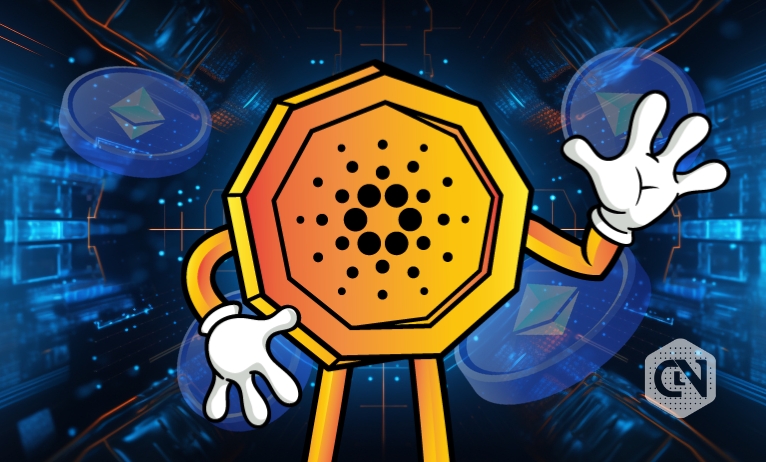Blockchain technology has transformed our understanding and implementation of secure, decentralized systems. One noteworthy platform is Cardano, which distinguishes itself through its emphasis on sustainability, scalability, and transparency. Employing a research-driven methodology, Cardano seeks to tackle critical issues such as scalability, interoperability, and sustainability, positioning itself uniquely in the rapidly evolving blockchain landscape. In contrast, Ethereum has long been the dominant player, renowned for its smart contract capabilities and diverse decentralized applications (dApps) ecosystem. However, Ethereum grapples with challenges about scalability, energy efficiency, and transaction costs, presenting opportunities for alternative platforms like Cardano to thrive in the blockchain space. With competition intensifying, the ongoing evolution of blockchain platforms continues to shape the trajectory of decentralized systems.
Cardano’s Potential Impact on Ethereum
Cardano, leveraging its Proof-of-Stake (PoS) consensus mechanism, stands poised to exert significant influence on Ethereum across several dimensions.
Scalability
Cardano’s PoS model, embodied in Ouroboros, facilitates faster transaction processing compared to Ethereum’s Proof-of-Work (PoW) consensus. Hence, Cardano could handle more transactions and users without significant fees or slowdowns. This translates to expedited deposits and withdrawals for participants in Cardano casinos, enriching their overall gaming experiences. The heightened transaction throughput enabled by the PoS framework enhances the fluidity and efficiency of in-game interactions, ultimately enhancing user satisfaction.
Security
Cardano’s protocol is underpinned by rigorous academic research and peer-reviewed development, placing a premium on fortified security measures. This meticulous approach minimizes the susceptibility to vulnerabilities and malicious attacks, fostering a more secure environment for Cardano users.
Sustainability
In stark contrast to Ethereum’s energy-intensive PoW algorithm, Cardano’s energy-efficient PoS mechanism presents a more sustainable and environmentally conscious alternative. This eco-friendly stance addresses concerns surrounding the escalating energy consumption of blockchain technologies, aligning with the global push for sustainable practices and cultivating a favorable public perception of Cardano.
Advertisement
Smart Contracts
Cardano’s Plutus platform is engineered to deliver superior and more secure smart contracts than Ethereum’s Solidity. With an emphasis on formal methods and high-assurance code, Plutus minimizes the potential for vulnerabilities and coding errors, furnishing Cardano usage in industries with a dependable framework for confidently implementing intricate smart contracts.
Cardano’s Roadblocks to Ethereum Domination
Cardano encounters several notable obstacles as it endeavors to establish itself as a formidable competitor to Ethereum in the blockchain and decentralized applications (dApps) arena.
Network Effect
Ethereum enjoys a substantial advantage in network effect, characterized by a well-established and vibrant developer community, a larger user base, and a more extensive ecosystem of decentralized applications compared to Cardano. The significant presence of developers and users within the Ethereum network creates a formidable barrier for Cardano to surmount. Ethereum’s entrenched network effect exerts a powerful gravitational force, making it arduous for Cardano to rival its prominence in this aspect.
Adoption Challenges
Cardano confronts potential hurdles in achieving widespread adoption and attracting developers and users away from the Ethereum ecosystem. Ethereum’s early mover advantage and pioneering status have enabled it to cultivate a robust brand and reputation within the blockchain and cryptocurrency sphere. Consequently, Cardano must diligently work to overcome the inertia of existing users, developers, and projects entrenched in Ethereum, persuading them to migrate or establish a presence on its platform. Additionally, addressing the inertia associated with established infrastructure and dApps on Ethereum poses a formidable obstacle for Cardano.
Regulatory Uncertainty
Both platforms operate within a regulatory landscape marked by uncertainty concerning cryptocurrencies. Regulatory ambiguities may impact both platforms, potentially favoring one over the other or introducing additional barriers to entry for both. This uncertainty complicates the competitive dynamics between Cardano and Ethereum, introducing an unpredictable external factor that could influence the trajectory of both platforms.
Advertisement
Cardano encounters significant challenges as it endeavors to challenge Ethereum’s dominance. Overcoming the network effects and adoption hurdles and navigating the uncertain regulatory terrain will necessitate Cardano to implement a comprehensive strategy to attract developers and users, foster a robust ecosystem, and effectively address regulatory concerns.
Final Thought
Cardano’s potential to challenge Ethereum’s dominance in the blockchain and decentralized applications (dApps) realm is significant, albeit accompanied by considerable hurdles. Overcoming Ethereum’s established network effect, addressing adoption obstacles, and navigating regulatory uncertainties will be pivotal for Cardano’s trajectory. Nevertheless, Cardano’s robust emphasis on scientific research, scalability, and sustainability, coupled with its distinctive approach to governance and consensus mechanisms, positions it as a formidable contender. With meticulous strategic planning, strong alliances, and a commitment to innovation, Cardano harbors the capability to carve out its niche within the decentralized finance and dApp ecosystems, offering users and developers an enticing alternative to Ethereum.







